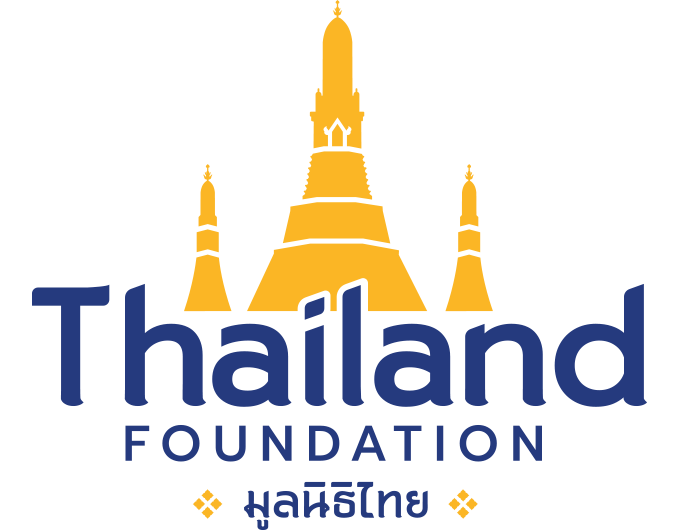Every culture carries its own unique musical heritage, reflecting its identity, tradition, and collective memory. Thailand is no exception. Its music reflects centuries of cultural blending, regional diversity, and artistic refinement, creating a rich and vibrant soundscape that continues to thrive today.
In this article, the Thailand Foundation invites you to explore the world of Thai traditional music, from the royal courts to village rice fields. Thai music offers a window into the soul of the Thai people.
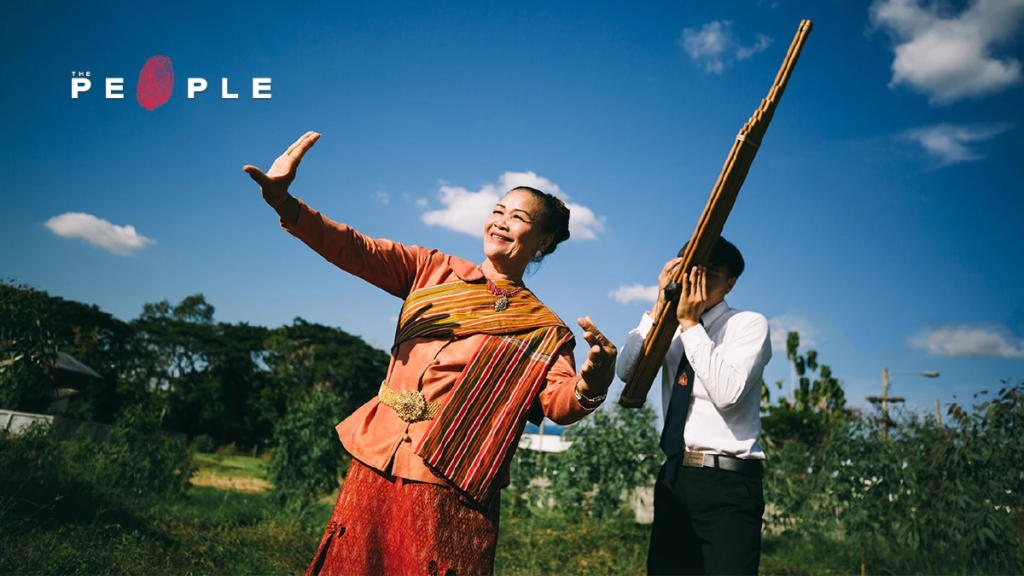
Photo Credit : thepeople.co
What is Thai Traditional Music?
As with the definition of what it means to be “Thai,” Thai traditional music is richly diverse and complex. Rather than representing a single uniform style, it encompasses the many musical traditions found across the country, shaped by diverse ethnic groups, regional cultures, and centuries of historical exchange.
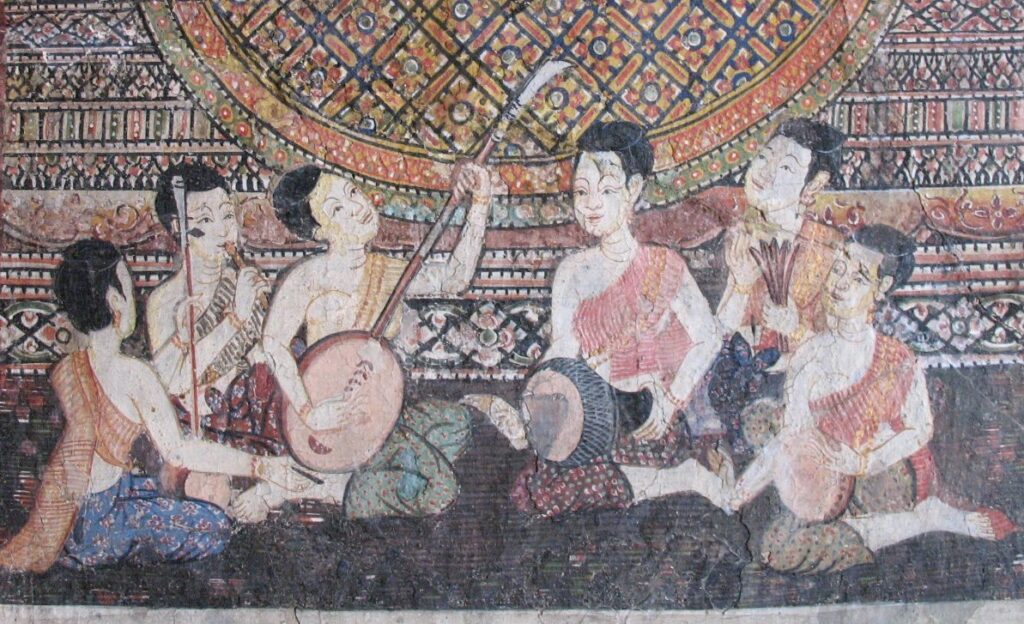
Photo Credit : silpa-mag.com
Over time, these strands have blended, forming a vibrant soundscape that reflects both diversity and unity. Thai traditional music carries within it the voices of farmers in the fields, performers in royal courts, and spiritual rituals passed down through generations.
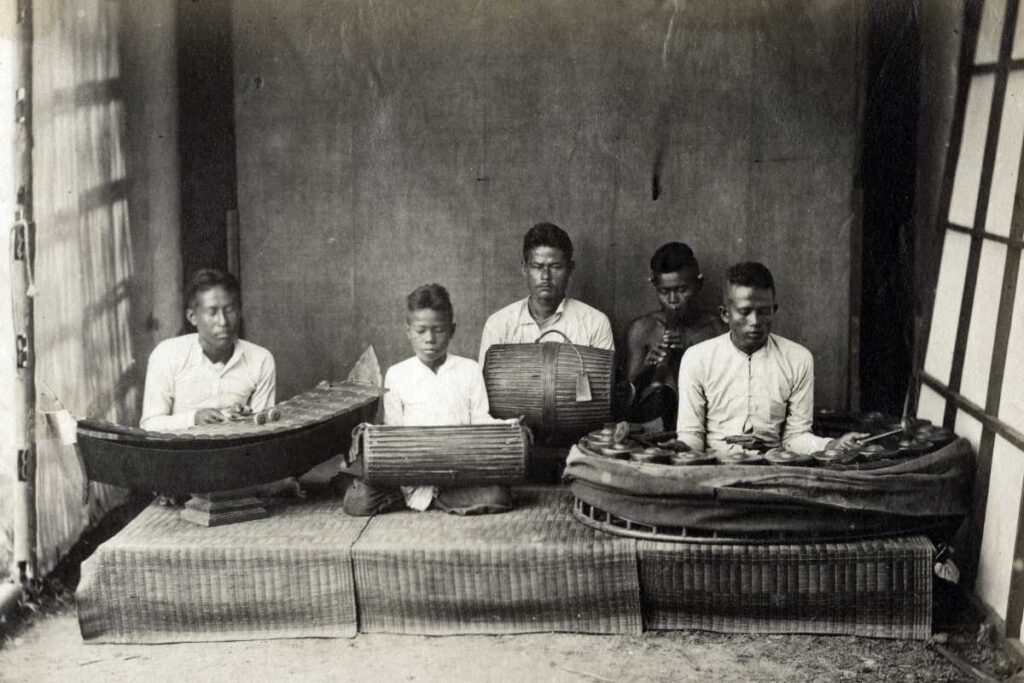
Photo Credit : holidify.com
Basic Elements of Thai Traditional Music
Thai traditional music encompasses both instrumental and vocal forms, often performed side by side. Instrumental music is performed through instruments, which are divided into four categories: 1. Deed – ดีด (plucking), 2. See – สี (bowing), 3. Tee – ตี(striking), and 4. Pao – เป่า (blowing). These include instruments such as the Jakhe จะเข้ (zither), Saw U ซออู้ (low-pitched fiddle) and Saw Duang ซอด้วง (high-pitched fiddles), Ranad – ระนาด (wooden xylophone), and Khaen – แคน (bamboo mouth organ).
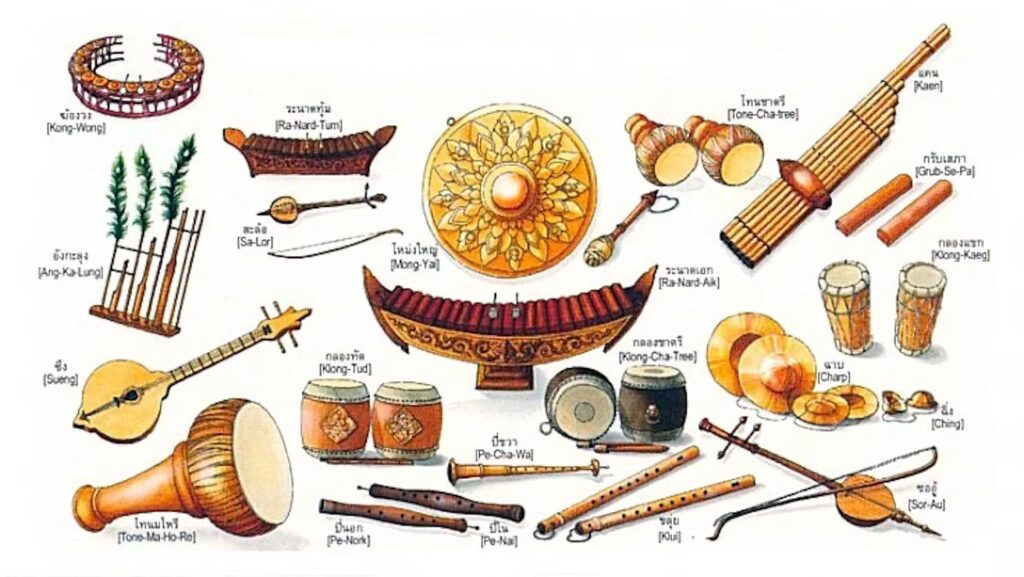
Photo Credit : sukhothai.be
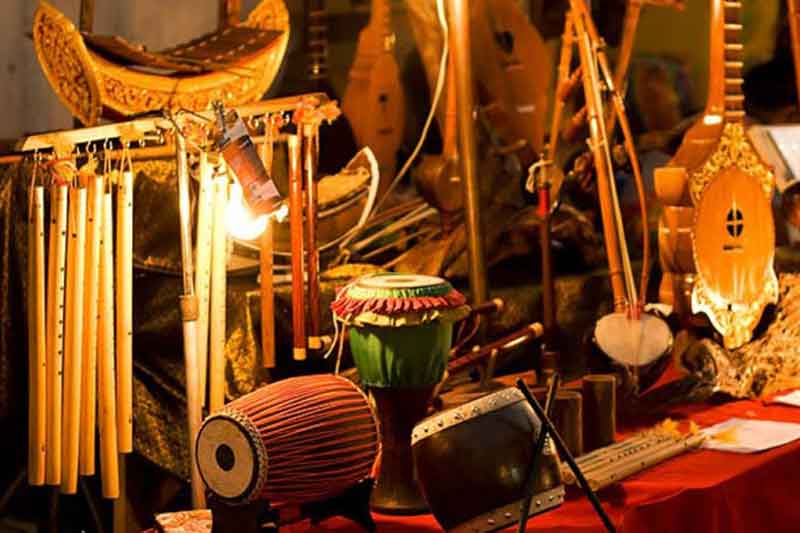
Photo Credit : tangopilgrim.com
On the vocal side, Thai traditional songs offer an equally rich variety, often deeply tied to local culture and way of life. Songs may narrate love stories, seasonal rituals, or spiritual beliefs, with melodies and lyrics that reflect the distinct languages and traditions of each region. Whether sung solo, as a group, or accompanied by instruments, vocals serve not only as entertainment but also as a vital means of preserving local identity and transmitting cultural values.
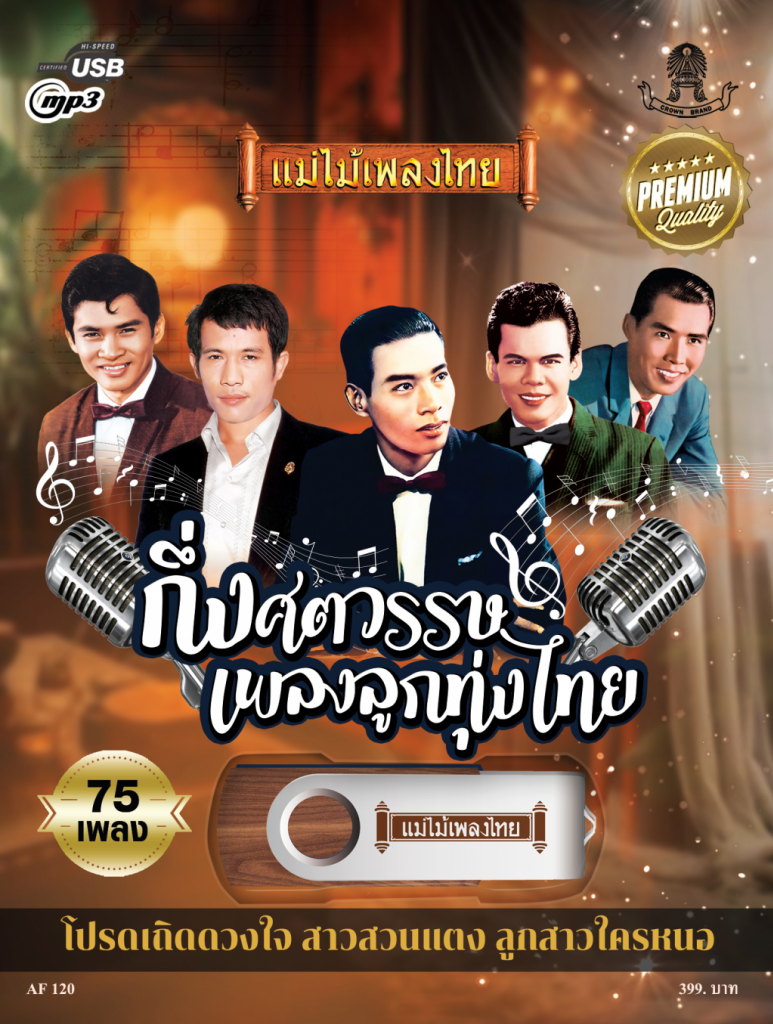
Photo Credit : maemaiplengthai.com
Classifying Thai Traditional Music
Because of its great diversity, classifying Thai traditional music is not always straightforward. The many regional styles, historical influences, and evolving practices make it difficult to draw clear boundaries. One helpful way to approach Thai music is to view it through three broad categories: 1. classical, 2. folk, and 3. contemporary. Each of these reflects different origins, functions, and cultural settings, offering a fuller picture of Thailand’s rich musical landscape.
1. Thai Classical Music
Thai classical music is deeply rooted in the traditions of the royal courts, where it evolved into highly refined and formalized art forms. These ensembles adhere to strict patterns, preserving repertoires, performance techniques, and ceremonial functions over generations. Many compositions have been passed down for centuries, maintaining the elegance and grace reflecting the courtly culture of old Siam.
There are three main ensemble categories within classical music, Piphat (ปี่พาทย์) features a combination of Tee and Pao instruments, known for its dynamic and layered rhythms often used in royal ceremonies and dramatic performances like Khon – โขน (masked dance).
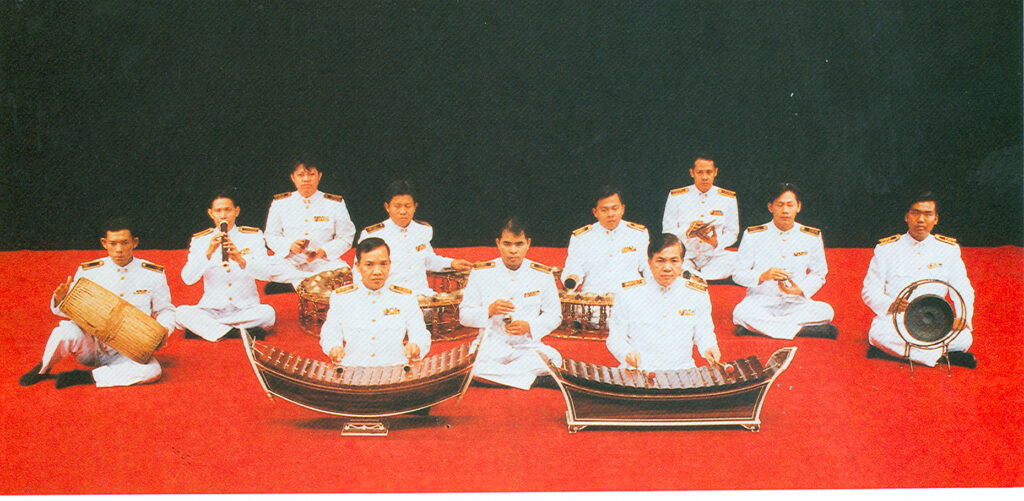
Photo Credit : staffzone.amnuaysilpa.ac.th
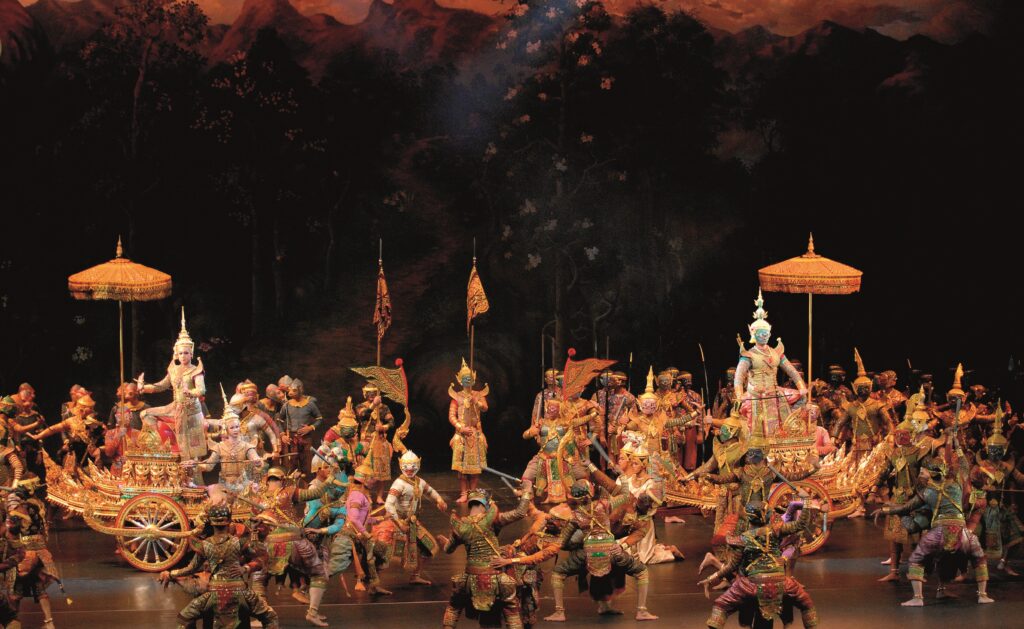
Photo Credit : ich-thailand.org
Khrueang Sai (เครื่องสาย) centers on string instruments, producing softer and more intimate sounds suited for indoor entertainment.

Photo Credit : ich-thailand.org
Mahori (มโหรี) blends both strings and percussion, historically performed at royal functions, offering a delicate yet intricate soundscape.
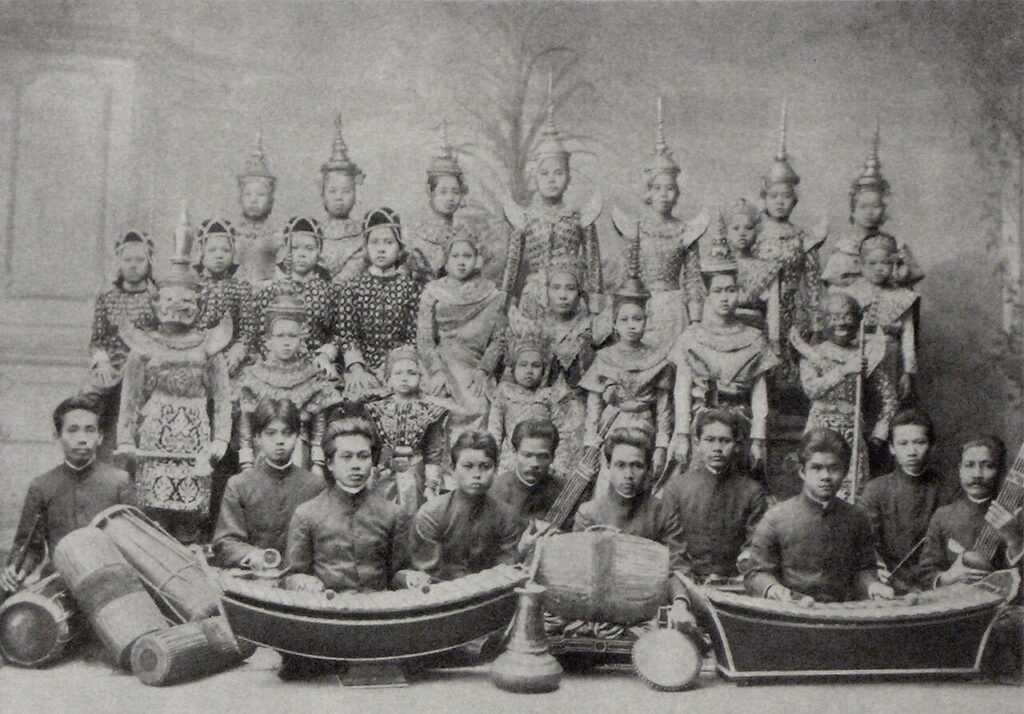
Photo Credit : hmong.in.th
2. Folk and Regional Music
Beyond the formality of the royal courts, folk and regional music represents the vibrant voices of Thailand’s diverse communities. These traditions reflect the everyday lives, beliefs, and environments of people across the country. Folk music tends to be more flexible and adaptive than classical forms, often passed down orally and shaped by local customs, seasonal activities, and festivals. Each region of Thailand has developed its own unique musical styles, instruments, and performance practices, creating a colorful musical mosaic.
In Northern Thailand, music is characterized by its gentle, flowing melodies reflecting the region’s tranquil landscapes and slower rhythm of life. The most iconic northern instruments include the Salor – สะล้อ (bowed fiddle), Sueng – ซึง (plucked lute), Pi Jum – ปี่จุม (free reed organ), and Khlui – ขลุ่ย (bamboo flute). One of the most distinctive vocal traditions is Phleng Sor (เพลงซอ), where singers engage in lyrical exchanges, often improvising witty, romantic, or heartfelt verses. Another is Phleng Joi (เพลงจ๊อย), a solo singing style used to express emotions ranging from love to sorrow. Northern folk music is performed in various social gatherings, festivals, and religious events, fostering a sense of community and continuity.
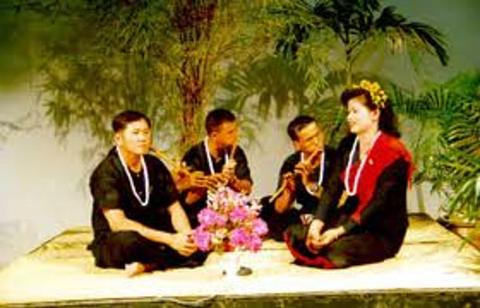
Photo Credit : gotoknow.org
In Northeastern Thailand (Isan), music carries influences from the Thai, Lao, and Khmer cultures, due to significant ethnic Laotian and Khmer populations in the region. The most recognized instrument is the Khaen (แคน), a bamboo mouth organ capable of producing rich, polyphonic sounds. Other important instruments include the Pong Lang – โปงลาง (wooden xylophone), Phin – พิน (lute), and Wote – โหวด (circular pan flute). Isan’s most signature vocal genre is Mor Lam (หมอลำ), where performers combine storytelling, singing, and often playful dialogue, accompanied by dynamic music.
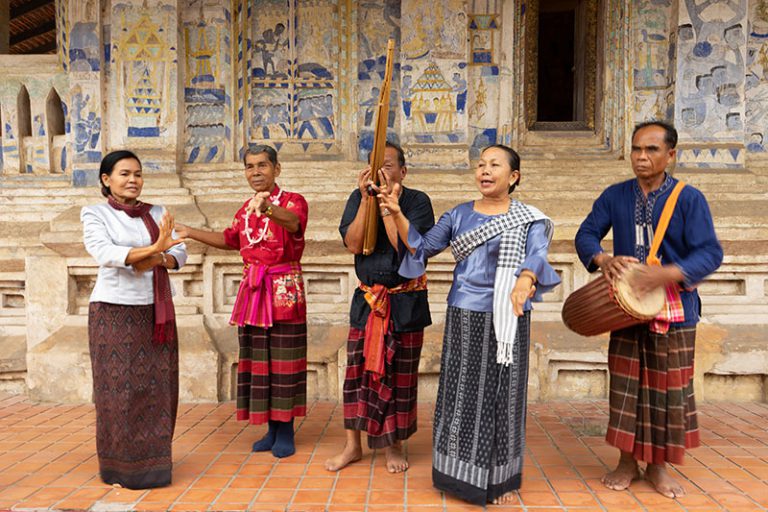
Photo Credit : suddeeonline.com
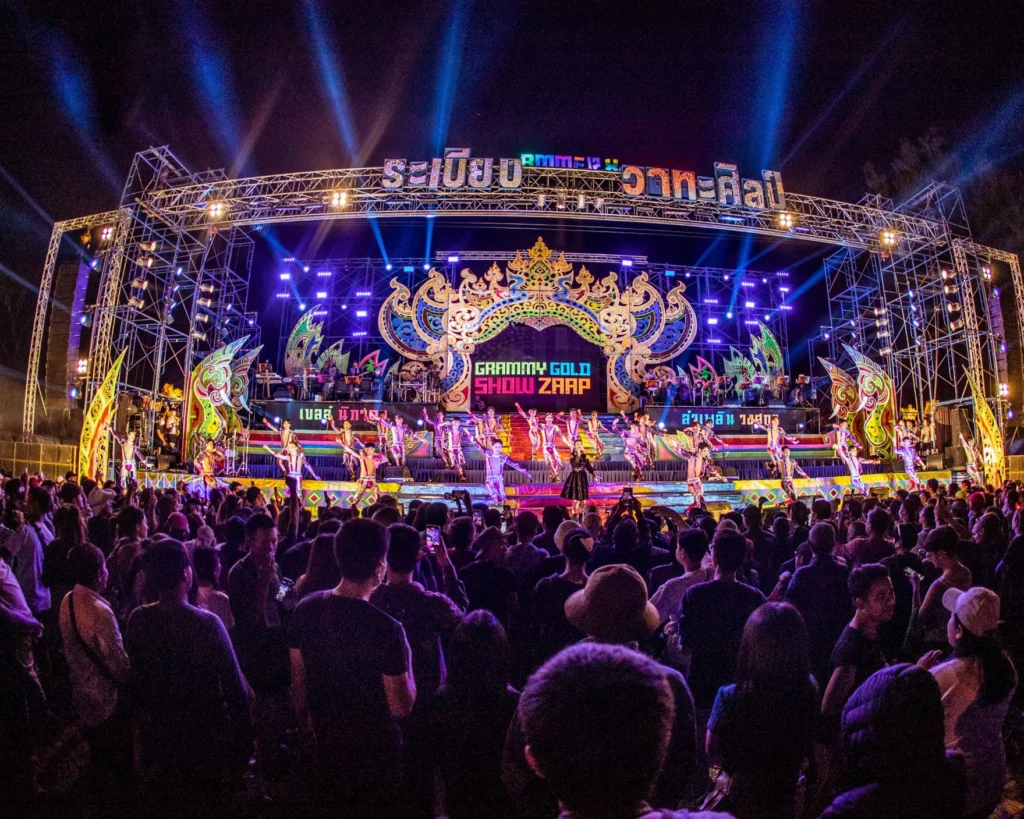
Photo Credit : theisaanrecord.co
Another famous vocal genre is Phleng Khorat (เพลงโคราช) from the province of Nakhon Ratchasima, which emphasizes wordplay, poetic language, and call-and-response singing. The lively energy of Isan folk music is a staple at festivals, temple fairs, and local celebrations, serving both entertainment and social functions.

Photo Credit : koratdaily.com
In Central Thailand, folk music often mirrors the rhythms of agricultural life, ceremonies, and seasonal activities. Songs are performed during rice planting, harvesting, and community gatherings, such as Phleng Reua – เพลงเรือ (boat songs), Phleng Kiao Khao – เพลงเกี่ยวข้าว (rice harvesting songs), and Phleng Ram Wong – เพลงรำวง (circle dance songs).

Photo Credit : trueplookpanya.com
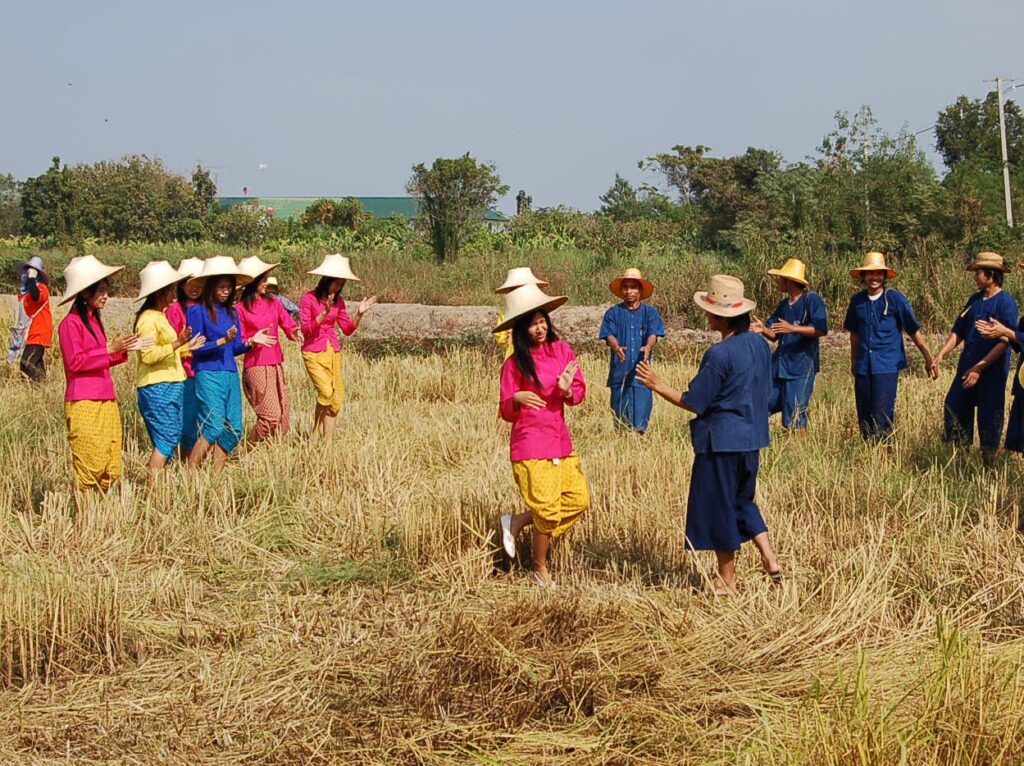
Photo Credit : rb-wisdom.blogspot.com
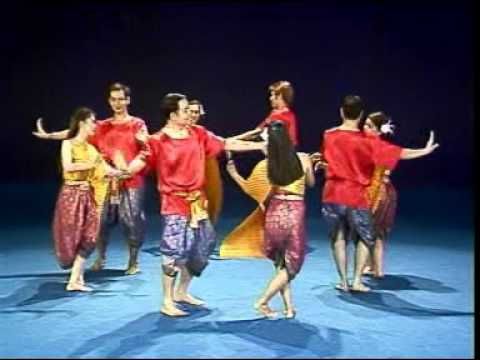
Photo Credit : blockdit.com
Central folk music frequently features lively percussions like Klong Yao – กลองยาว (long drums), Ching – ฉิ่ง and Chab – ฉาบ (cymbals), and krab – กรับ (wooden clappers), as well as string instruments and vocal exchanges between male and female singers in forms like Phleng Lam Tat (เพลงลำตัด), Phleng Choi (เพลงฉ่อย), and Phleng E Saew (เพลงอีแซว). These playful, sometimes teasing exchanges reflect the humor and social interaction of village life.
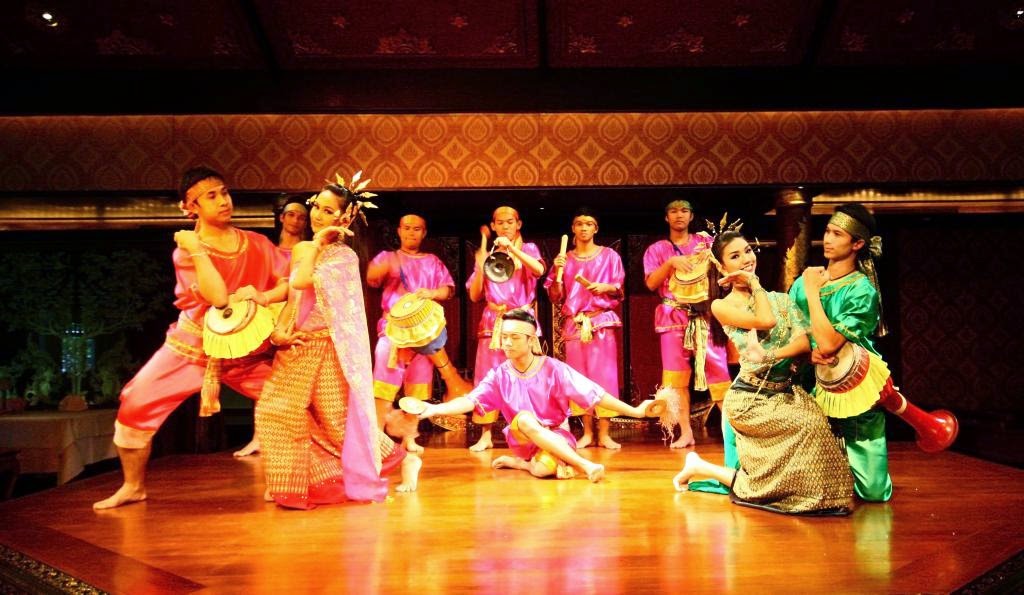
Photo Credit : yusu3236.blogspot.com
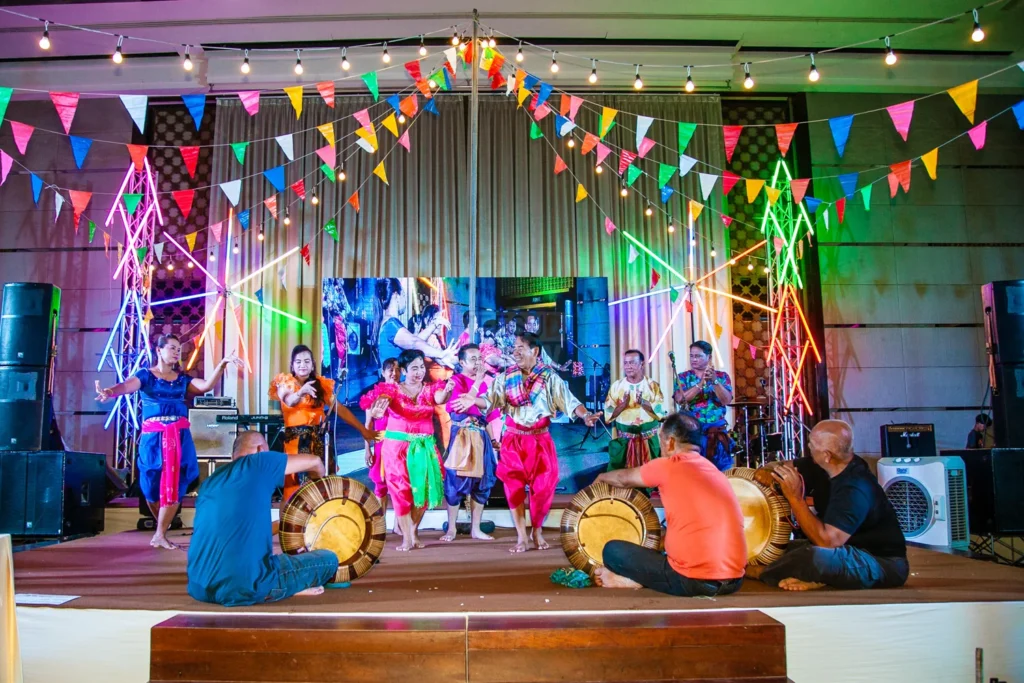
Photo Credit : teesudshow.com

Photo Credit : plengthai2553.blogspot.com
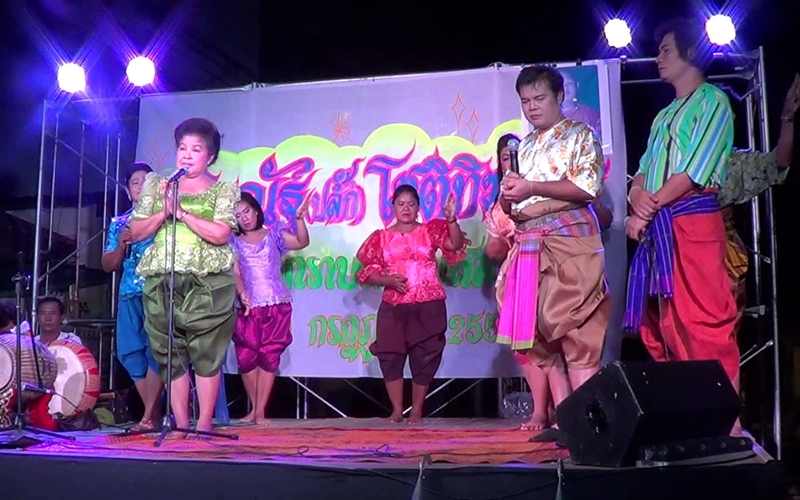
Photo Credit : matichon.co.th
In Southern Thailand, the region’s music is shaped by a blend of Thai, Malay, and even Indian influences due to historical trade routes and cultural exchanges. Instruments like the Rammana – รำมะนา (frame drum), Klong Thab – กลองทับ (goblet drums), and Mong – โหม่ง (gong pair) are central to many performances. The South also features unique vocal traditions such as Phleng Bok – เพลงบอก (narrative songs), Phleng Na – เพลงนา (rice field songs), and Likay Hulu– ลิเกฮูลู, a lively form of performance that blends song, drama, and dance, often performed in Malay dialects. Southern folk music plays a vital role in both religious ceremonies and festive occasions, with performances often tied to local beliefs, spiritual practices, and community gatherings.
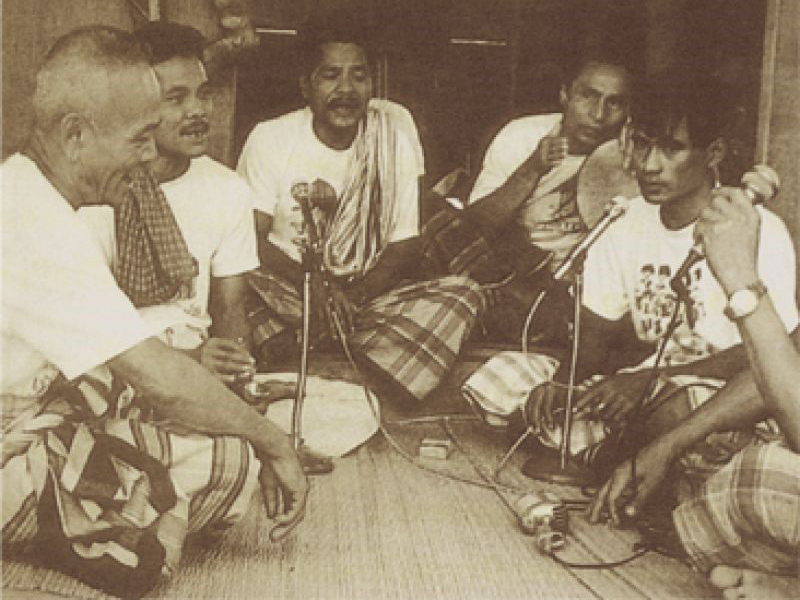
Photo Credit : library.wu.ac.th
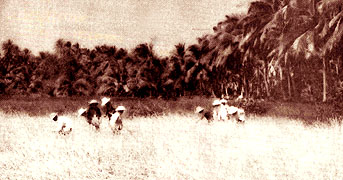
Photo Credit : thaiheritage.net
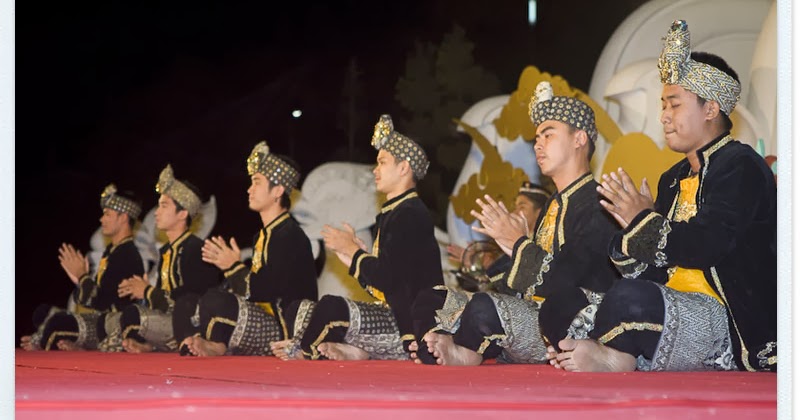
Photo Credit : suwimonn.blogspot.com
3. Contemporary Music
Although rooted in ancient traditions, Thai music has continually adapted to changing times. During the reign of King Rama V, Western musical elements such as notation, harmony, and instruments like the violin and piano began to significantly influence Thai compositions. This blending produced new forms in which traditional melodies were arranged with Western orchestration, reflecting the country’s openness to global influences.
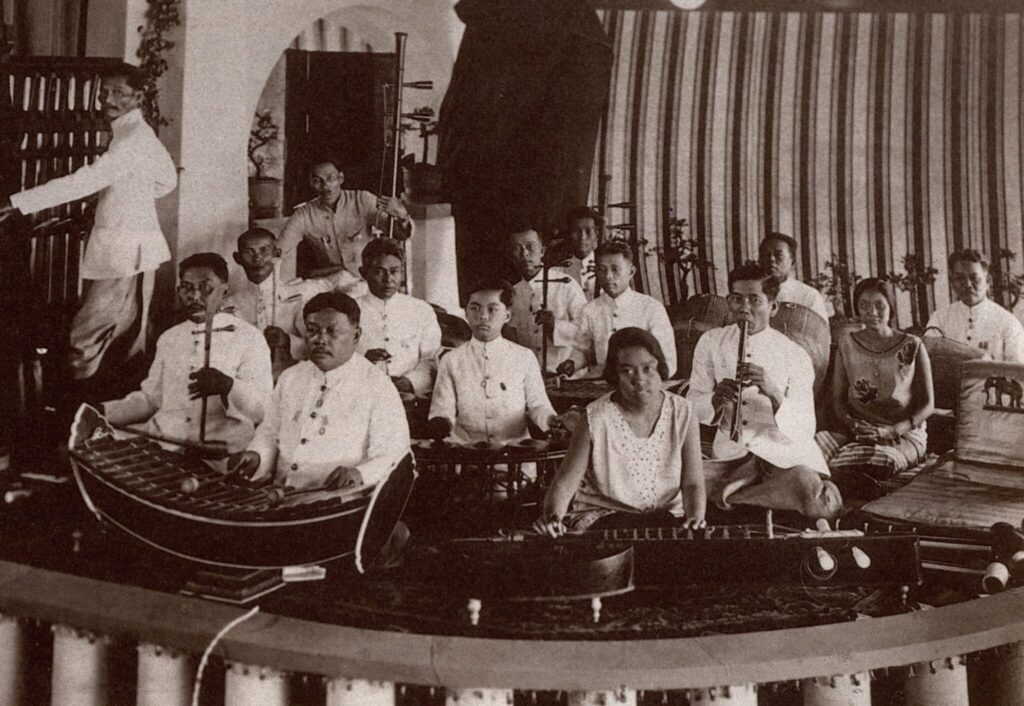
Photo Credit : library.stou.ac.th
Today, Thai traditional music continues to evolve, often merging with popular and global styles. Contemporary artists experiment by incorporating traditional instruments into pop, jazz, and electronic music, introducing these sounds to wider audiences. Some ensembles reinterpret classical pieces through modern arrangements, keeping the spirit of tradition alive while reaching new generations.
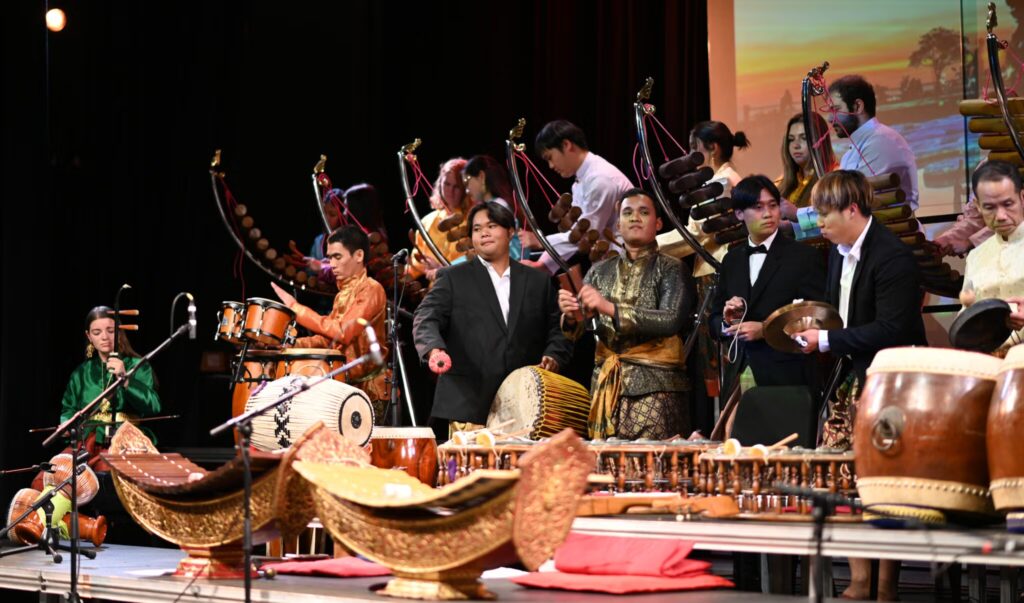
Photo Credit : schoolofmusic.ucla.edu
Music and Way of Life
In Thai society, music plays a central role in everyday life, deeply connected to both personal and communal experiences. It serves as entertainment, whether performed for pure enjoyment or as part of festivals, dances, and theatrical performances.
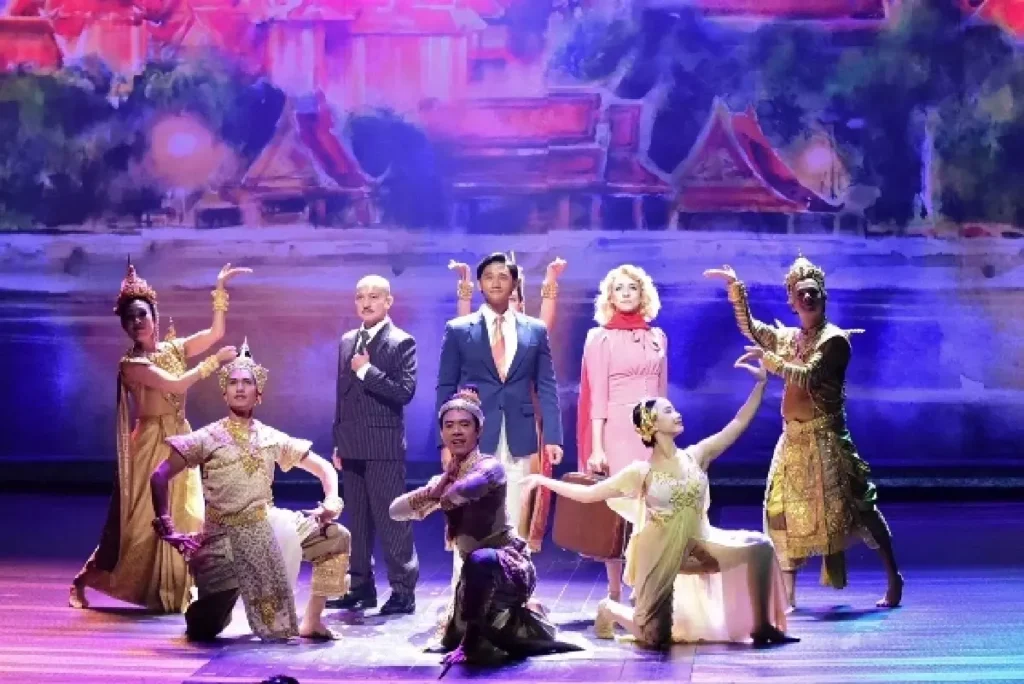
Photo Credit : bangkokbiznews.com
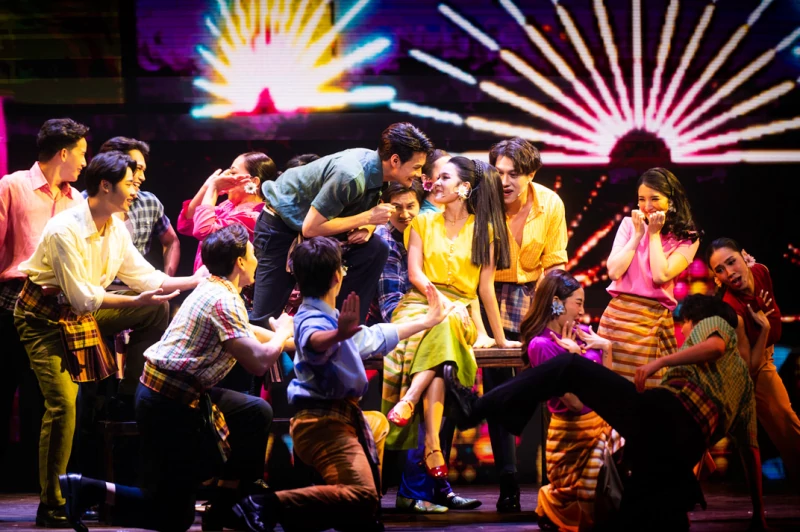
Photo Credit : workpoint.co.th
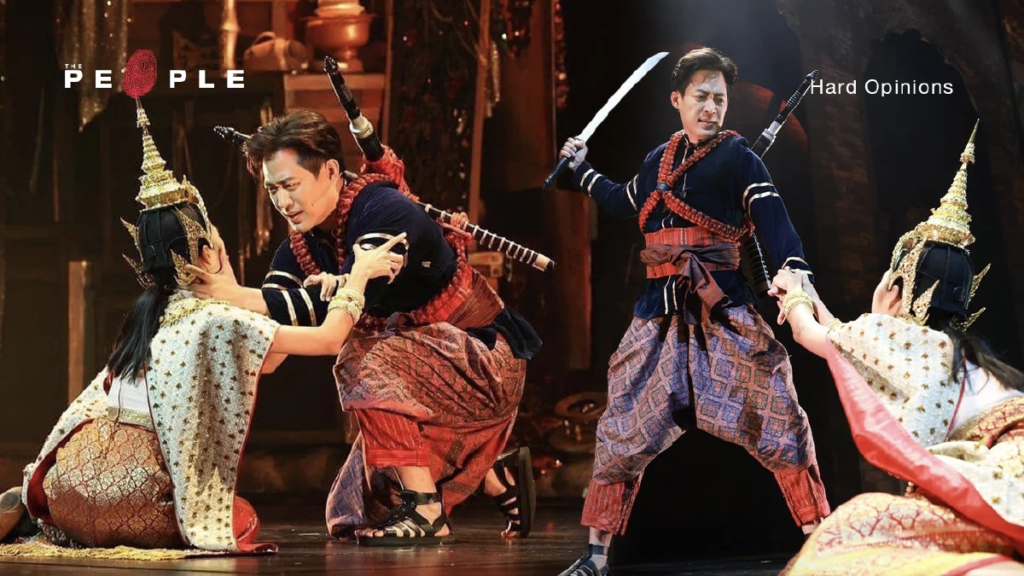
Photo Credit : thepeople.co
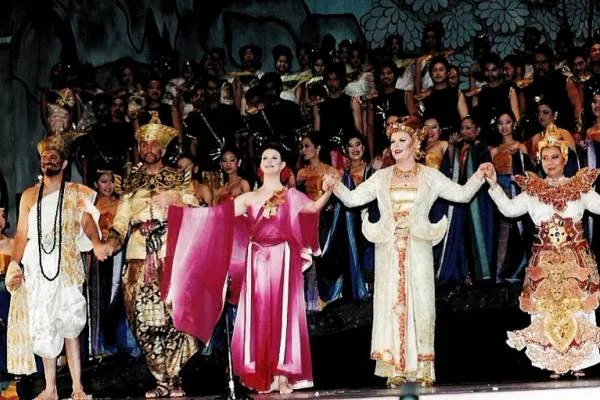
Photo Credit : carlifeway.com
Music also accompanies important rituals and ceremonies, from religious offerings to royal processions, adding meaning and solemnity to these occasions. In the past, certain musical ensembles were linked to rank and social status, with specific repertoires reserved for the royal court.
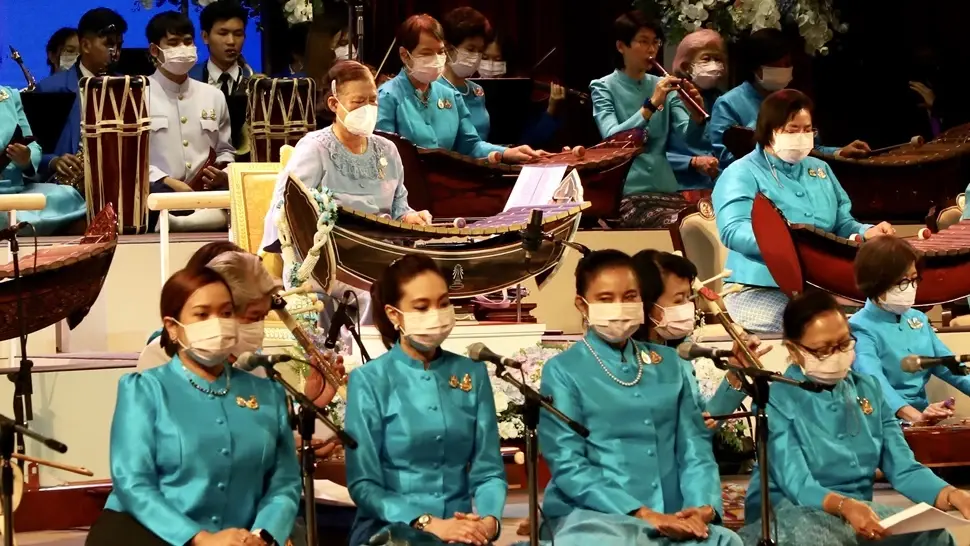
Photo Credit : bangkokbiznews.com
At the heart of Thai musical tradition lies a strong sense of reverence and respect for the masters of the art. Ceremonies such as Wai Khru and Khrob Khru are performed to honor teachers, both past and present, celebrating the lineage of knowledge passed down through generations. The relationship between teacher and disciple is considered sacred, extending beyond technical instruction to include guidance in character and discipline. Musicians are expected to uphold a strict code of conduct rooted in humility, gratitude, and responsibility, reflecting not only their skill but also their personal integrity as bearers of cultural heritage.
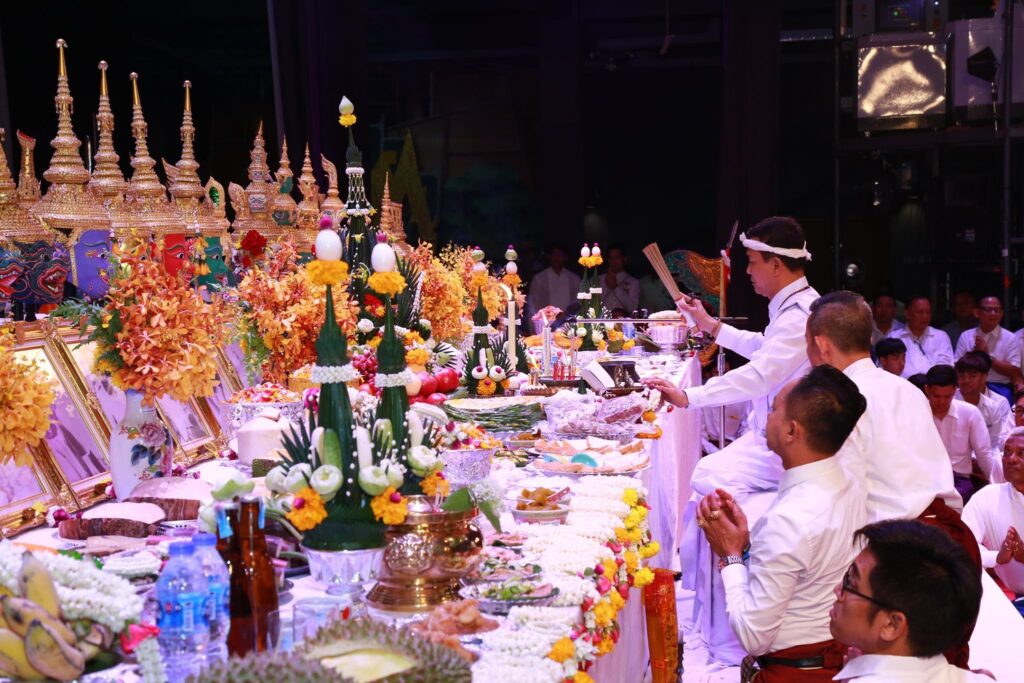
Photo Credit : silpa-mag.com
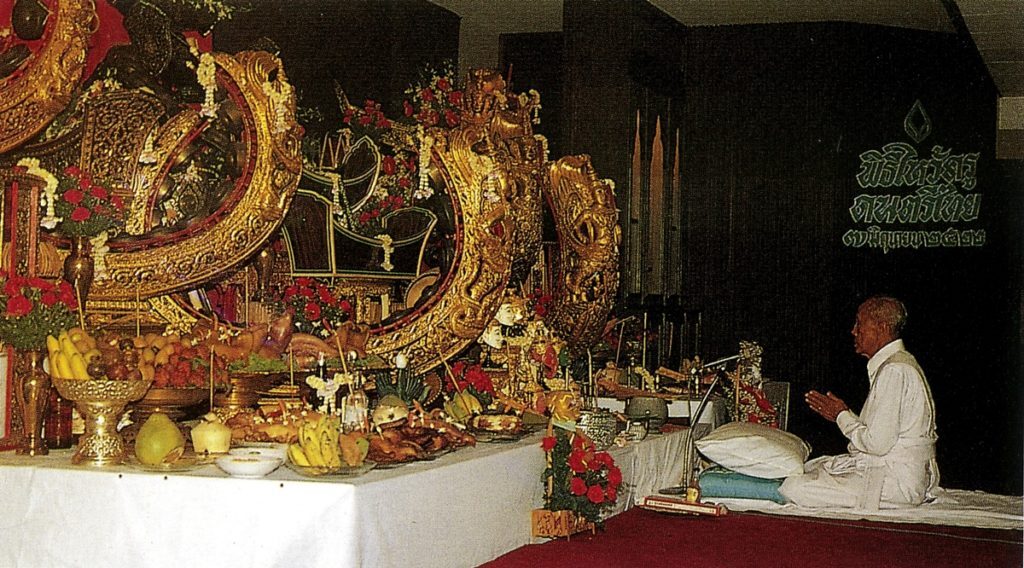
Photo Credit : silpa-mag.com
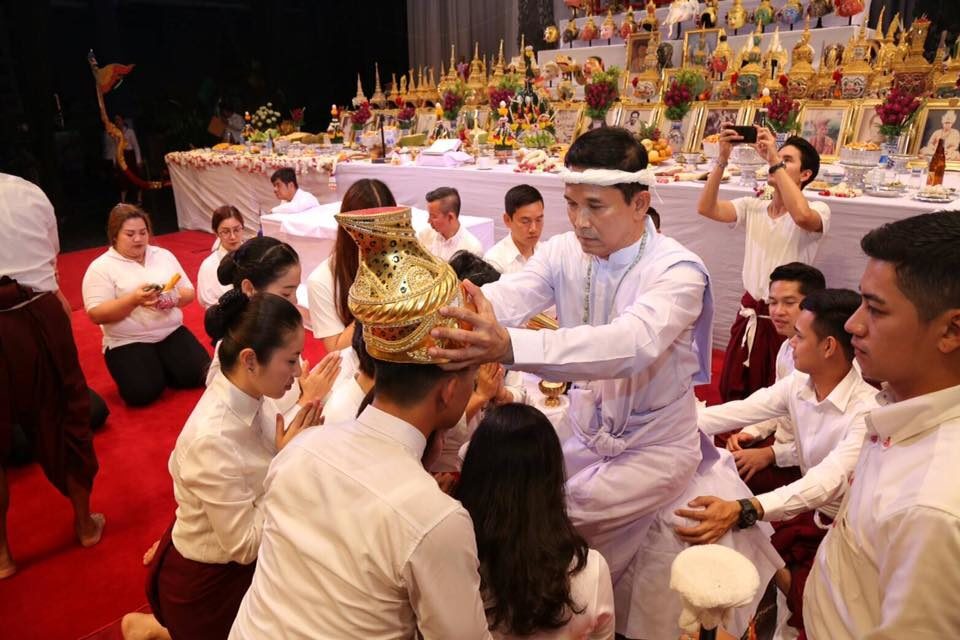
Photo Credit : silpa-mag.com
Music also serves as a powerful expression of both national and regional identity. Each region’s distinct instruments, melodies, and performance styles reflect the cultural roots, languages, and ways of life of their communities. From the northern Phleng Sor to the northeastern Mor Lam, these musical forms preserve the voices of their people. Through festivals, educational programs, and modern adaptations, these traditions continue to be passed down, ensuring that Thailand’s rich musical heritage remains alive and meaningful for future generations.
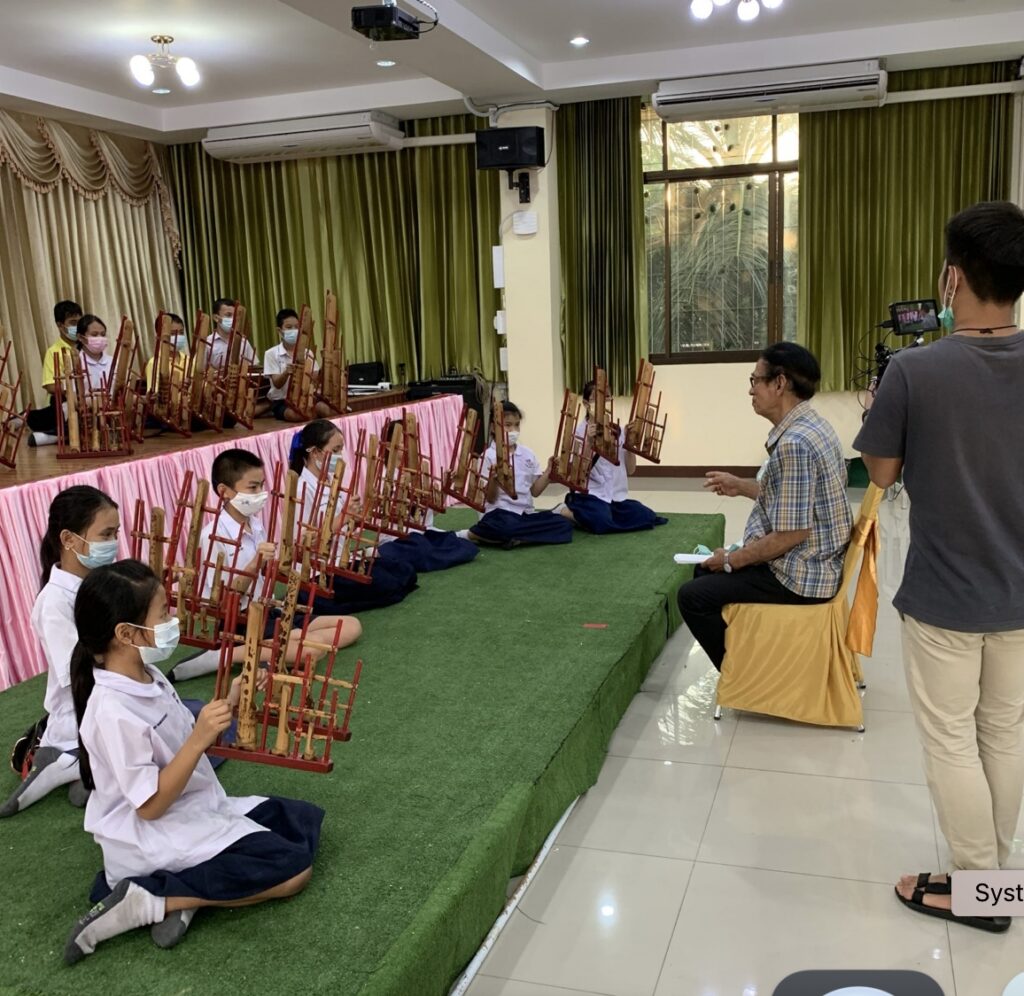
Photo Credit : cuartculture.chula.ac.th
Values Behind Thai Traditional Music
Thai traditional music reflects a remarkable level of artistic finesse. Across centuries, musicians and instrument makers have refined techniques, melodies, and craftsmanship to create a musical tradition that is both intricate and beautiful. Each element demonstrates the careful attention to sound, balance, and expression that lies at the heart of Thai musical artistry.
At the same time, the tradition is deeply grounded in respect. Reverence for teachers, elders, and ancestors is embedded in the musical culture, with rituals such as Wai Khru and Khrob Khru symbolizing the unbroken chain of knowledge passed from generation to generation. This respect extends beyond the music itself, shaping the personal discipline and humility expected of every practitioner.
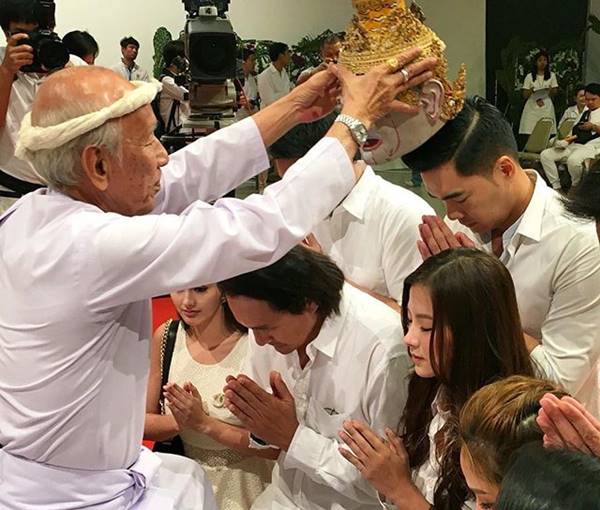
Photo Credit : women.kapook.com
Openness is another key value reflected in Thai music. Throughout its history, Thailand has embraced influences from other cultures while preserving its own voice. This openness has allowed Thai music to grow, adapt, and incorporate diverse sounds, instruments, and ideas without losing its distinct identity.
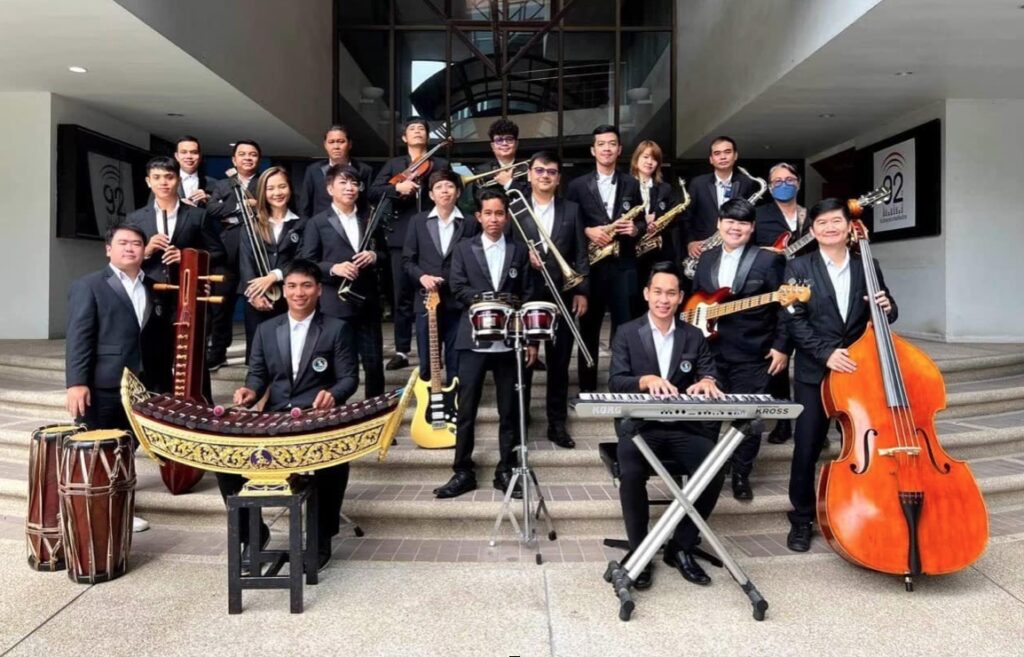
Photo Credit : Facebook Page วงดนตรีกรมประชาสัมพันธ์ Prd band
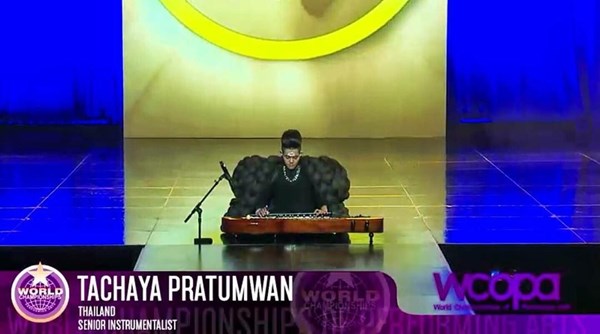
Photo Credit : musicstation.kapook.com
Finally, Thai traditional music embodies harmony, not only in sound but in social and cultural coexistence. Each region’s unique musical style contributes to a national identity that celebrates diversity. Through music, communities with different languages, beliefs, and histories find shared ground, preserving their individuality while coexisting peacefully as part of Thailand’s rich cultural landscape.
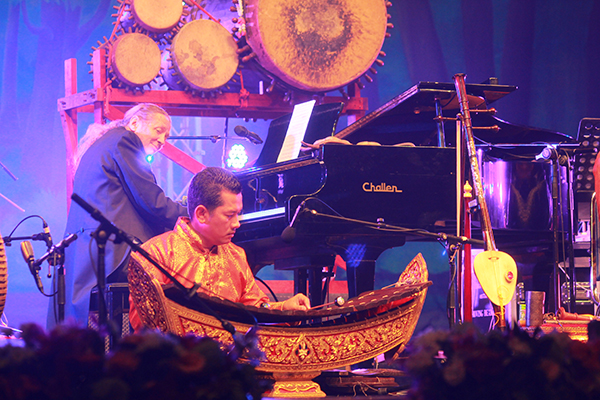
Photo Credit : bangkoklifenews.com
Conclusion
Thai traditional music offers far more than melodies and rhythms; it is a living reflection of the nation’s history, values, and diverse identities. From the grandeur of classical court ensembles to the vibrant sounds of regional folk traditions, Thai music continues to thrive as both an art form and a cultural treasure.
Yet, what we have explored here is only a glimpse into a rich and intricate world. The Thailand Foundation invites you to continue discovering the beauty, complexity, and enduring spirit of Thai traditional music, a timeless expression of the Thai people’s creativity and cultural soul.
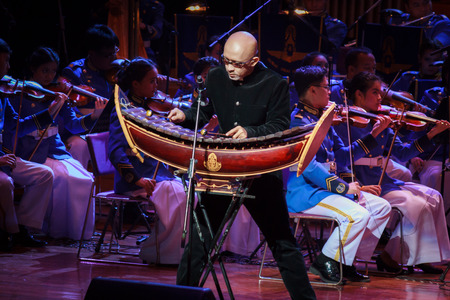
Photo Credit : 123rf.com
Thai traditional music is a vibrant aspect of Thai culture and heritage. It reflects the nation’s rich diversity, artistic refinement, and deep-rooted values of respect, harmony, and openness. Join us in exploring more stories of Thailand and the Thai people as we take you on a journey to discover the essence of Thainess.
Sources :
- Thai Traditional Music
https://www.thailandfoundation.or.th/en/culture_heritage/thai-music/ - Northern Thai Music
https://balltanadolblog.wordpress.com/%E0%B8%A0%E0%B8%B2%E0%B8%84%E0%B9%80%E0%B8%AB%E0%B8%99%E0%B8%B7%E0%B8%AD/ - Northeastern Thai Music
https://balltanadolblog.wordpress.com/%E0%B8%A0%E0%B8%B2%E0%B8%84%E0%B8%AD%E0%B8%B5%E0%B8%AA%E0%B8%B2%E0%B8%99/ - Central Thai Music
https://balltanadolblog.wordpress.com/%e0%b8%a0%e0%b8%b2%e0%b8%84%e0%b8%81%e0%b8%a5%e0%b8%b2%e0%b8%87/ - Southern Thai Music
https://balltanadolblog.wordpress.com/%e0%b8%a0%e0%b8%b2%e0%b8%84%e0%b9%84%e0%b8%95%e0%b9%89/ - Thai Folk Songs
https://music.trueid.net/th-th/detail/LZBEbRaAe28p

Author : Tayud Mongkolrat
This article is written with the help of AI.
Uploaded on July 18, 2025
